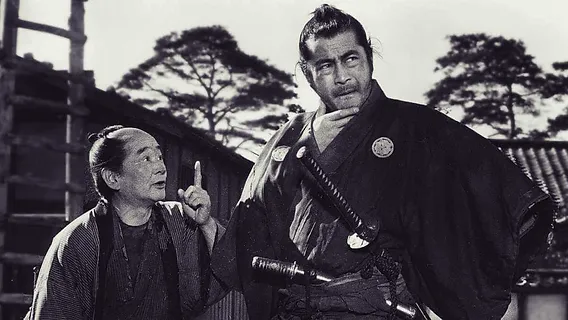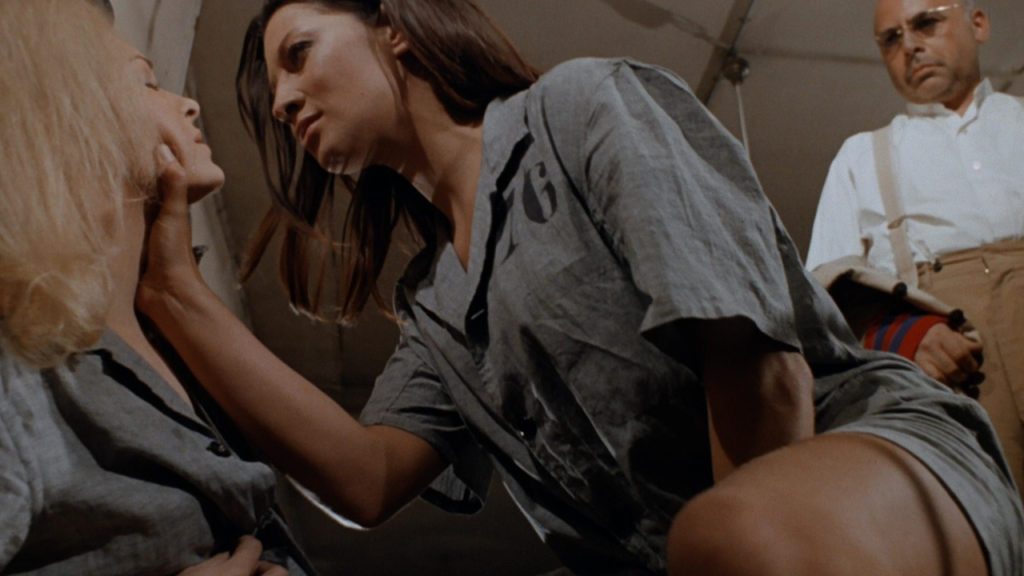love4livi.com – Yojimbo (1961), directed by Akira Kurosawa, is one of the most influential films in the history of cinema. A genre-defining masterpiece, the film introduced a new type of samurai character—the anti-hero—who would go on to become a staple of both Japanese and Western film traditions. With its gripping story, sharp dialogue, and innovative direction, Yojimbo helped cement Kurosawa’s reputation as a master filmmaker and significantly influenced the development of the action and western genres.
Starring Toshiro Mifune in the iconic role of the wandering ronin, Yojimbo combines elements of samurai cinema, film noir, and the Western, creating a timeless story of greed, violence, and redemption. Its impact on both Japanese cinema and global filmmaking is immeasurable, inspiring countless films, including Sergio Leone’s A Fistful of Dollars (1964), which borrowed heavily from Kurosawa’s work.
Plot Overview: A Lone Ronin in a Town of Violence
The story of Yojimbo centers around a nameless samurai (played by Toshiro Mifune), a ronin, or masterless samurai, who wanders into a small, lawless town. The town is caught in the grip of two feuding crime families, the Seibei and the Ushitora, who control its economy and life through violence and intimidation. The ronin, drawn by the chaos, sees an opportunity to play both sides against each other for his own gain.
Upon arriving, the ronin quickly assesses the situation, understanding that the town’s corruption runs deep. Rather than taking sides, he takes a more cynical approach: he manipulates both crime families, offering his services as a bodyguard to each in turn. His ultimate plan is to eliminate both gangs, bringing an end to the violence and freeing the townspeople. As the story unfolds, the ronin’s true motivations and sense of justice become clear, and his journey transforms from a mercenary act to one of personal redemption.
The film’s premise—of a lone figure pitting two factions against one another—is both simple and effective, and Kurosawa builds a tense, suspenseful narrative around the ronin’s interactions with the two gangs, as well as his clever use of strategy and violence. Throughout, the film explores themes of loyalty, honor, and morality, using its lead character’s ambiguous sense of right and wrong to challenge traditional samurai ideals.
The Anti-Hero and the Emergence of a New Samurai Archetype
One of the most significant contributions of Yojimbo to film history is its portrayal of the samurai as an anti-hero. In contrast to the noble, righteous samurai seen in earlier films, Mifune’s character is pragmatic, selfish, and morally ambiguous. His ronin is a man who fights not out of a sense of duty or honor, but for self-interest, using his skill with the sword to manipulate others. His motivations are driven by a personal code of survival, and he is willing to exploit the chaos of the town for his own gain.
This shift in the samurai archetype—towards a more cynical, self-serving figure—would go on to inspire many future characters in both Japanese cinema and Western films. The archetype of the lone gunman, seen in films like A Fistful of Dollars, owes a great debt to Kurosawa’s portrayal of the ronin. The character’s moral ambiguity and willingness to act outside the bounds of traditional honor and duty created a lasting influence on the depiction of protagonists in action films and Westerns.
The film’s portrayal of the ronin as a character who plays both sides of the conflict in the town also speaks to broader themes of corruption, power, and the futility of loyalty in a world of violence. The ronin’s ability to manipulate and deceive reflects a world where traditional codes of conduct have been broken down, and where individuals must rely on their wits and cunning rather than honor or integrity.
Cinematic Style: Kurosawa’s Direction and the Power of Visual Storytelling
In Yojimbo, Akira Kurosawa’s direction is masterful, and his use of visual storytelling is a defining characteristic of the film. One of the key aspects of the film’s style is the way Kurosawa frames his shots, using the wide-open spaces of the town to create a sense of isolation and vulnerability for the characters. The use of long, lingering shots builds tension, while also emphasizing the slow, deliberate actions of the protagonist. The stark contrast between light and shadow, a hallmark of Kurosawa’s work, plays a vital role in creating the mood of the film, enhancing its noir-like atmosphere.
The action sequences in Yojimbo are dynamic and often brutal, with Kurosawa showcasing the protagonist’s martial prowess in quick, decisive moments. These action scenes are choreographed with precision, balancing violence with a sense of purpose that reflects the film’s thematic concerns. The film’s pacing, which alternates between tense moments of negotiation and explosive bursts of violence, keeps the audience engaged throughout, maintaining a sense of suspense and unpredictability.
The film’s use of music, by composer Masaru Sato, further elevates its impact. The sparse, haunting score complements the film’s bleak tone and adds to the emotional weight of the action. The music becomes a critical element in building the atmosphere of isolation and tension that pervades the town.
Themes of Morality, Power, and Corruption
At its core, Yojimbo is a film about power, corruption, and the choices that individuals make in a world where traditional moral values have been distorted. The two rival crime families, Seibei and Ushitora, represent the breakdown of order and justice, as each family operates with violence and intimidation to maintain control over the town. The ronin, who initially appears to be just another opportunist, gradually reveals himself to be a figure who challenges the system of power by taking on both families, manipulating them for his own ends.
The film also explores the idea of the individual’s role in society and the impact of personal choice in the face of overwhelming power. The ronin’s actions ultimately result in the destruction of both crime families, freeing the town from their grip. In doing so, the film suggests that even in a corrupt and violent world, the individual can still exert power and influence, although often at great personal cost. However, the ronin’s lack of any true moral or ethical compass also reflects the film’s dark view of humanity, where actions often come with unforeseen consequences.
Additionally, Yojimbo critiques the concept of loyalty and honor that is so deeply ingrained in samurai culture. While the ronin does exhibit moments of honor and integrity, his approach to dealing with the crime families is rooted in pragmatism rather than idealism. His willingness to manipulate both sides for his own advantage serves as a commentary on the corrupting influence of power and the collapse of traditional codes of behavior.
The Legacy of Yojimbo: Influence on Cinema and Beyond
Yojimbo is one of the most important films in the history of cinema, and its impact extends far beyond Japan. The film’s structure, themes, and character archetypes have influenced filmmakers all over the world, particularly in the action and Western genres. Sergio Leone’s A Fistful of Dollars, for example, is a direct remake of Yojimbo, with Clint Eastwood’s iconic “Man with No Name” character serving as a clear homage to Mifune’s ronin. Leone’s film further popularized the “spaghetti Western” genre, which would go on to dominate international cinema in the 1960s and 1970s.
Yojimbo also helped to solidify Toshiro Mifune as one of the most iconic actors in Japanese cinema. His portrayal of the ronin is one of his most memorable roles, and his dynamic performance helped elevate the film’s impact. Mifune’s ability to embody both the ruthlessness and the humanity of the character remains a key reason for the film’s enduring appeal.
Moreover, Yojimbo helped to redefine the samurai genre. Prior to this film, samurai movies often focused on themes of loyalty, honor, and sacrifice, in line with traditional bushido values. With Yojimbo, Kurosawa and Mifune introduced a new kind of samurai hero—one who is driven by self-interest and survival rather than rigid codes of behavior. This shift in characterization would influence not only subsequent samurai films but also a wide range of action films worldwide.
Conclusion: A Landmark in Cinema
Yojimbo (1961) remains one of the defining works of Akira Kurosawa’s career and an essential film in the history of world cinema. Through its innovative direction, memorable performances, and complex themes, Yojimbo has had a lasting impact on the samurai genre and cinema as a whole. The film’s exploration of power, corruption, and morality, coupled with the iconic anti-hero portrayed by Toshiro Mifune, ensures that Yojimbo continues to resonate with audiences and filmmakers alike.




